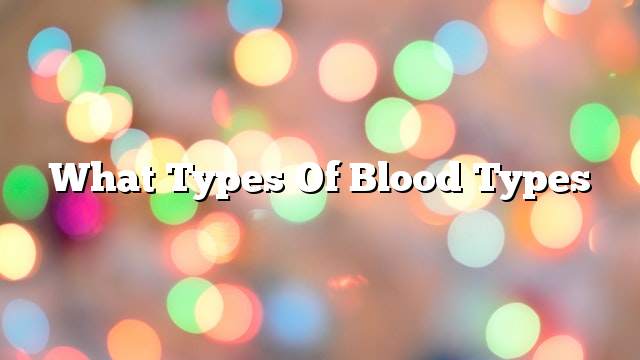the blood Is a combination of plasma and a large group of cells that float in it. Blood is a physical fluid that supplies the body with food such as sugar, oxygen and also carries excess waste.
Types of blood cells:
- Red blood cells containing hemoglobin containing iron, which in turn transport oxygen from the lungs to the tissues and cells of the body.
- White blood cells that fight abnormal cells such as cancer cells.
- Platelets forming the so-called stroke, especially in cases of bleeding.
Blood types can be classified according to the ABO system discovered in 1900 at the University of Vienna by Carl Landsteinerro, who later won the Nobel Prize for his discovery of blood groups.
Blood groups are a genetic characteristic of certain genes. They are of particular importance in cases of blood transfusion from one person to another. Many blood diseases are known to be transmitted through blood. Attention must be paid to the antibody of the person who will donate blood, When a person receives blood, they can be classified into four types A, B, AB, O.
RH: It is a special antigen against the outer membrane of red blood cells, characterized by negative and positive types.
- If we have the blood type that carries the antibody A on the surface of its cells, then we carry the B antibodies in the plasma.
- If we have a blood group that carries the antibody B on the surface of its cells, then we carry the antibodies to A in the plasma.
- If we have a blood group that carries the antibody A and B on the surface of their cells, then we do not carry antibodies to A or B in the plasma.
- If we have a blood group that carries the antibody A and B on the surface of their cells, then we do not carry antibodies to A or B in the plasma.
- If we are not a blood group carrying the antibody A or B on the surface of their cells, then we carry the antibodies to A or B in the plasma.
Blood donation rules:
- O can be given to all species but only O.
- A can give to A and AB.
- B can be given to B and AB.
- AB can only be given to AB.
